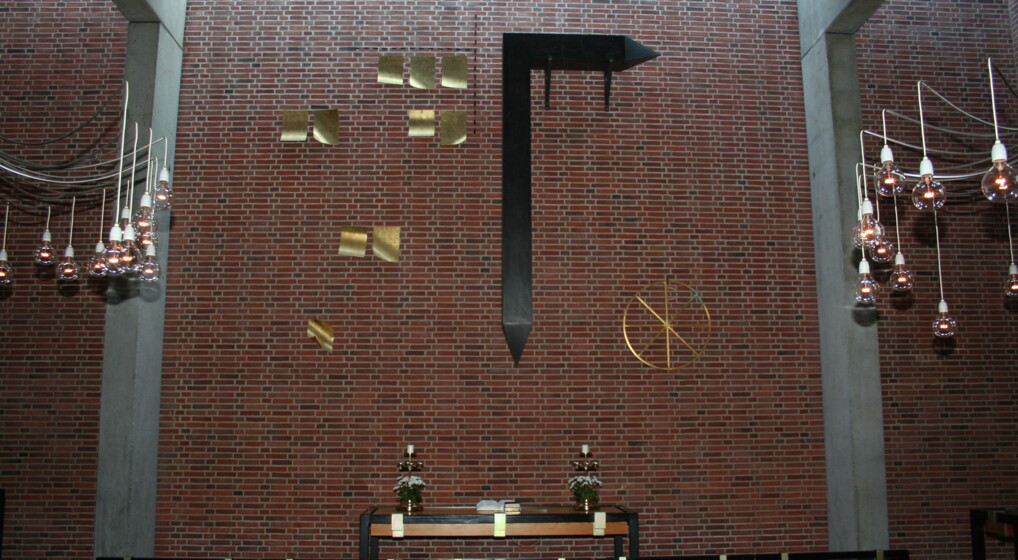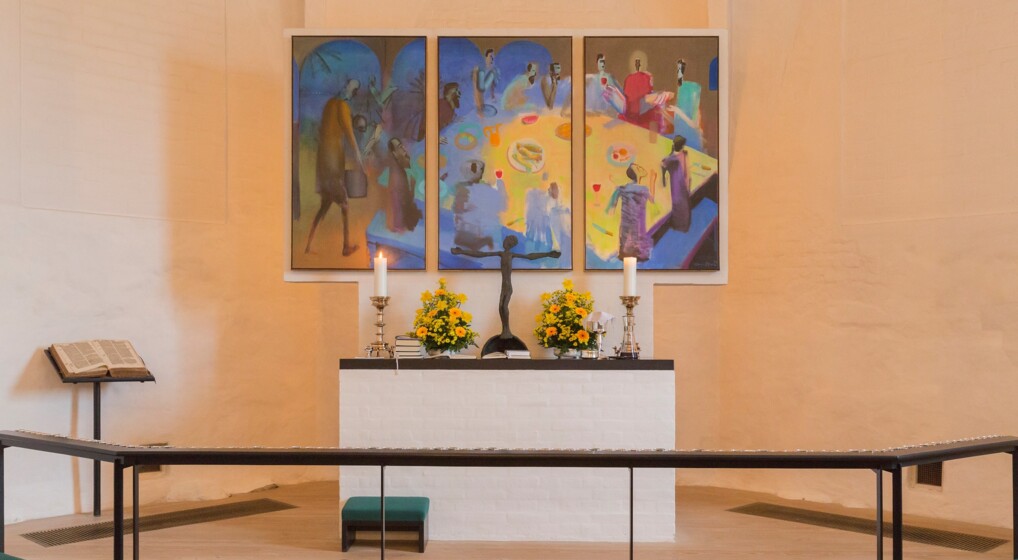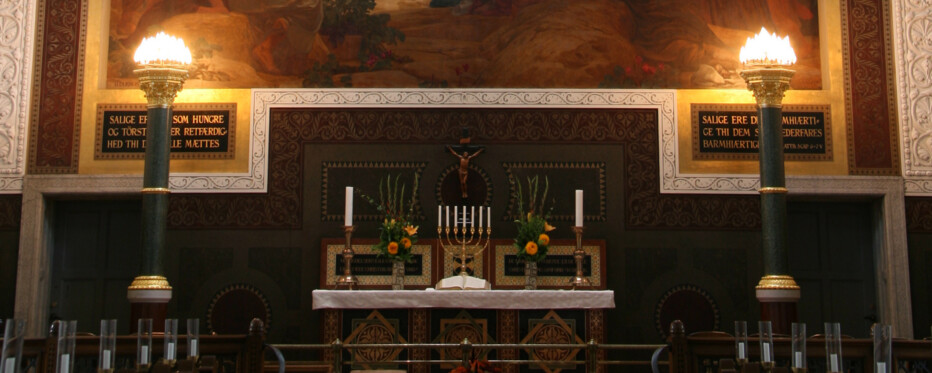A long tradition
An altarpiece is a framed artistic representation of a sacred subject. It is typically situated above or behind the altar. The existence of altarpieces in Danish churches can be traced back to the 12th century. The material used – for example wood, glass, ceramic – and the (biblical) scenes and characters represented as well as the style of the altarpiece vary largely from one church to another. However, it is still possible to talk about periods in the Church's history that are dominated by a specific type of altarpiece.

Altervæg af Hein Heinsen i Jakobskirken, Roskilde Søndre Sogn. Foto: Morten Pedersen.
The role of the altarpiece
The altarpiece is an example of sacred imagery. Its role is to visually reinforce the understanding of the stories that we find in the Bible of the Eucharist and of the Christian fellowship. Thus, it functions as a visual aid that enhances the worship of the Church; it is rooted in particular customs of liturgical and devotional practice and shaped by vernacular traditions in Christian sacred art. Today many pastors in the Evangelical Lutheran Church make use of other types of visual aids such as video clips or pictures when they preach in church. This, however, does not rule out the altarpiece as a visual means to understanding and devotion.

ArneHaugenSørensen, AltertavleBregnetKirke © Villy Fink Isaksen, Wikimedia Commons.
Danish church artists
Some artists, in the past as well as in the present, have specialised in creating altarpieces. We find altarpieces by Claus Berg (last quarter of the 15th century-1535?), Carl Bloch (1834-1890) and Joakim Skovgaard (1856-1933) in a number of parish churches. Living artists include Arne Haugen Sørensen, Peter Brandes, Hein Heinsen and Maja Lisa Engelhardt. You can read about these artists (in Danish) and see examples of their work here.



